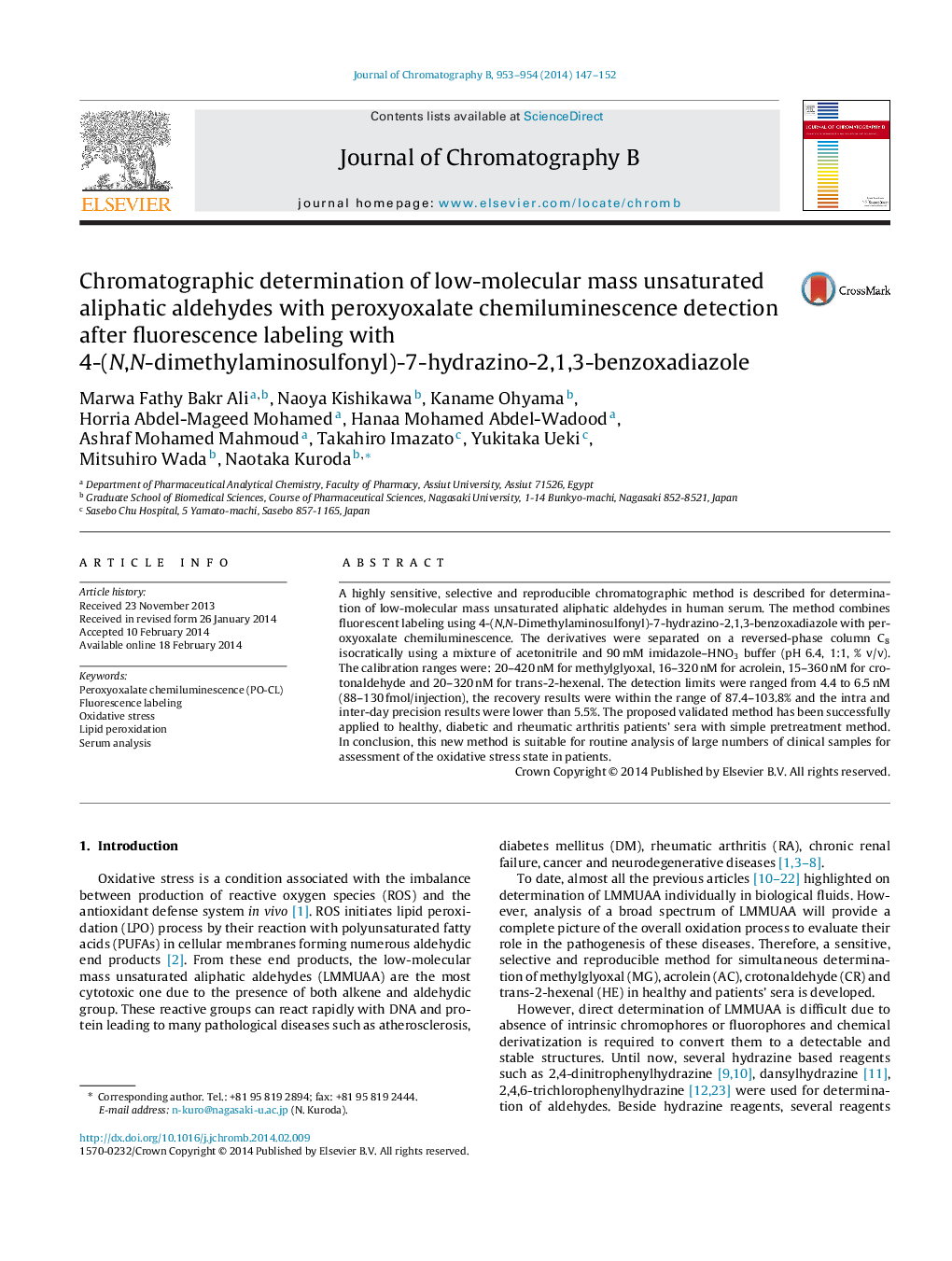| Article ID | Journal | Published Year | Pages | File Type |
|---|---|---|---|---|
| 1216227 | Journal of Chromatography B | 2014 | 6 Pages |
•A selective HPLC–POCL method is developed for monitoring of LMMUAA in human serum.•The method combines fluorescent labeling with (DBD-H) with PO-CL detection.•The detection limits were from 4.4 to 6.5 nM at a signal-to-noise ratio (S/N) of 3.•The method was applied in healthy, DM and RA patients’ sera with simple retreatment.•The method is new, sensitive and suitable for routine analysis of clinical samples.
A highly sensitive, selective and reproducible chromatographic method is described for determination of low-molecular mass unsaturated aliphatic aldehydes in human serum. The method combines fluorescent labeling using 4-(N,N-Dimethylaminosulfonyl)-7-hydrazino-2,1,3-benzoxadiazole with peroxyoxalate chemiluminescence. The derivatives were separated on a reversed-phase column C8 isocratically using a mixture of acetonitrile and 90 mM imidazole–HNO3 buffer (pH 6.4, 1:1, % v/v). The calibration ranges were: 20–420 nM for methylglyoxal, 16–320 nM for acrolein, 15–360 nM for crotonaldehyde and 20–320 nM for trans-2-hexenal. The detection limits were ranged from 4.4 to 6.5 nM (88–130 fmol/injection), the recovery results were within the range of 87.4–103.8% and the intra and inter-day precision results were lower than 5.5%. The proposed validated method has been successfully applied to healthy, diabetic and rheumatic arthritis patients’ sera with simple pretreatment method. In conclusion, this new method is suitable for routine analysis of large numbers of clinical samples for assessment of the oxidative stress state in patients.
